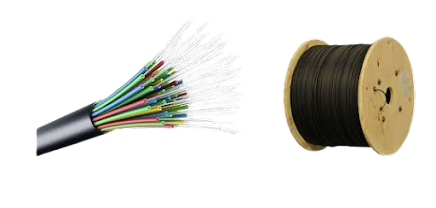Wireless Installation Checklist
Wireless Installation Checklist
Summary:
Find a site like amazon.com for wireless devices, and take a look at people's reviews to see what the different brands out there are like, and what you can get for your money
Article Body:
Beware of buyers - ignorance can be a financial waste and a lot of trouble. Before you buy any wireless equipment, you need to be sure what you are doing. There's nothing worse than having everything there and knowing that it doesn't work at your home, or with your computer, or at the distance you need it. Here's a simple checklist of things you should do before you go out and spend your hard-earned money on wireless networking devices.
Interference Checks
While this will not prevent the wireless network from operating fully, interfering with its frequency range can significantly slow it down as well as reduce its range. If something is interfering, you'll first find out when your connection stops working - until you know what to look for.
There are two very common causes of wireless interference: cordless phones and microwave ovens. 2.4 GHz, the most common frequency in a wireless network, is also the most commonly used frequency in a cordless phone. However, it is possible to find phones that use other frequencies. Microwaves, on the other hand, operate by definition at a frequency of about 2.4 GHz. Having such devices at home is fine, but definitely not in a room like a computer with which you want to use a wireless connection.
Wall Construction
Wireless works well with partitions made of: drywall, plywood, other wood (including doors), glass.Wireless, in theory, can easily pass through walls and other partitions. In practice, though, some walls are more solid than others, which means they are more likely to block signals. Note that this is only important for your internal partitions, not external ones. However, this includes your destinations, if you want the connection to work between levels.
Wireless works well with partitions made of: drywall, plywood, other wood (including doors), glass..
Trouble with wireless: brick, plaster, cement, metal, stone, double glazed glass.
Basically, it all has to do with how insecure the content is - the ones that allow you to pass as many wireless signals as possible.
If you have a wall made of one of the 'bad' materials, this is not the end of the world. This simply means that the speed of your wireless connection may be lower or lower. You may want to spend more than you can afford to get better equipment and overcome this problem.
Decide Your Budget.
You just have to be more discriminating about helping other people. Is it a long road? Want your connection through stone walls? Each item will help you decide how much you should spend - the more problems you have, the better. Remember, the more energy you have, the more you will need. If you live in a small wooden house, this is probably the cheapest you can find.
Read Reviews.
Find a site like amazon.com for wireless devices, and take a look at people's reviews to find out what the different brands are like, and what you can get for your money. It is always a bad idea to buy something without getting second, third and fourth opinions, especially if you are buying it online. If you can, try going to the computer store and see some wireless networking devices in action before working on your own.
Install and Update Windows XP.
Lastly, if you have the latest version of Windows, your wireless life will really get better. Since wireless is such a new technology, when Windows 98, ME and 2000 were released, and were not included in the support system for them, it was not really important. You'll have more trouble getting wireless to work on such systems than Windows XP.
Even if you have Windows XP, though, that doesn't solve the problem completely. Windows XP Service Pack 2 (an updated version of Windows XP) contains much easier-to-use tools for configuring and using wireless than the non-updated version. If you've been using Windows for a while without updating your copy, you should make sure you get all the latest updates from http://windowsupdate.microsoft.com before you go any further. Have found



Comments
Post a Comment